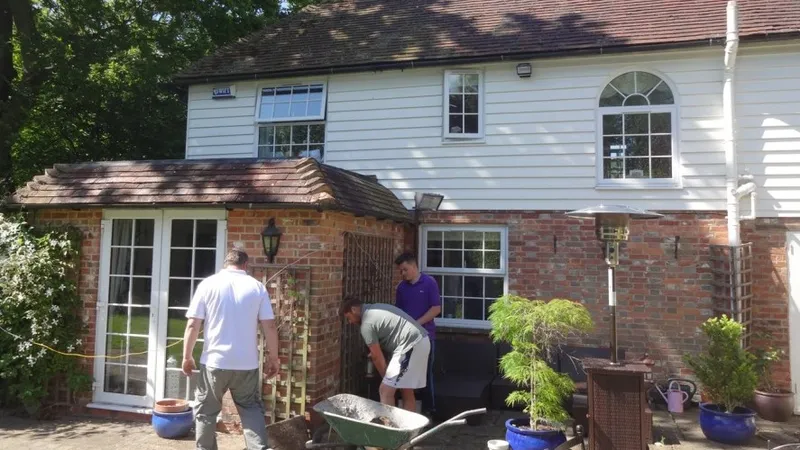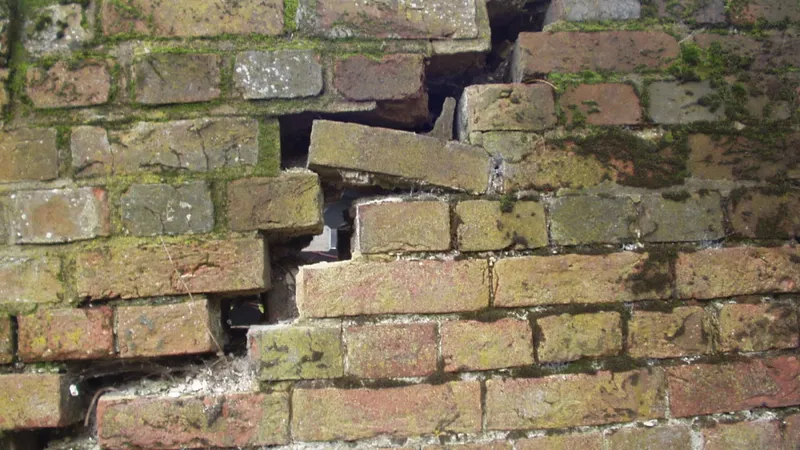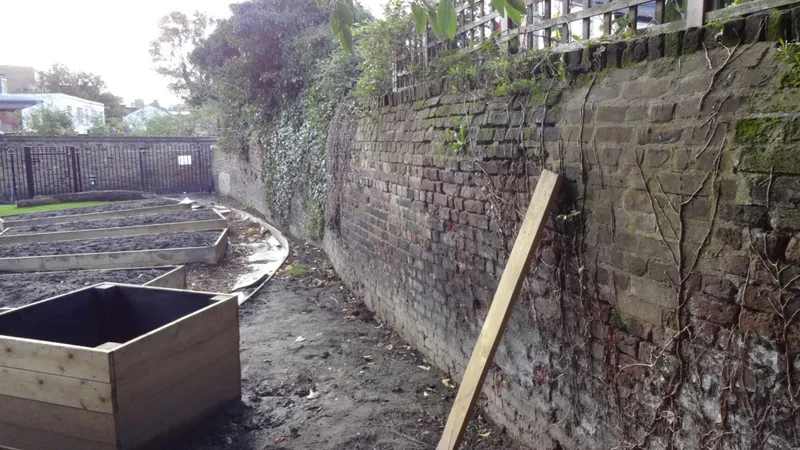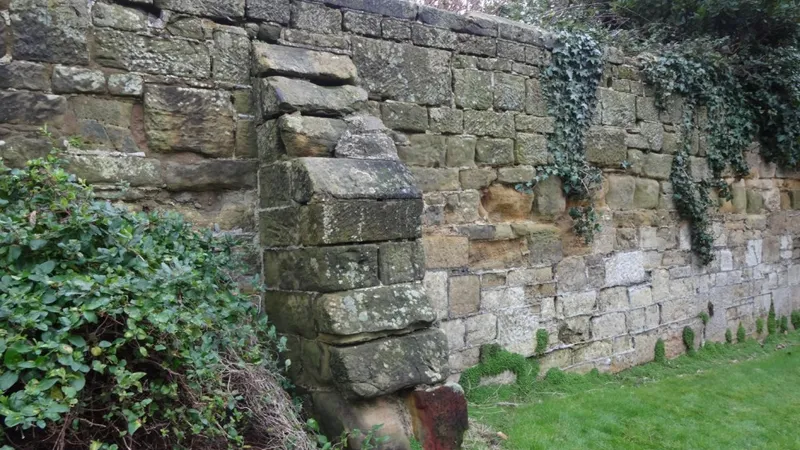Wall defects
We assess wall defects including bowing walls, leaning structures, gable wall failures, and boundary or retaining wall issues. Our Chartered Structural Engineers provide expert surveys and tailored reports to diagnose causes and recommend effective structural solutions.
Boundary wall repairs
Defects in boundary walls at the edge of a property can lead to the need for the wall to be demolished and rebuilt, or in many cases, repaired. In some cases, the ground or the foundations under the wall are the source of the problem. If there is a neighbour’s land or property on the other side of the wall, this is classed as a Party Wall, and any structural engineering or construction work will need to be carried out with their knowledge and consent.
In some cases, boundary walls may also be retaining walls, which support the ground above it, where the forces of gravity would otherwise result in that upper ground slumping down. The lateral forces at play in these kinds of walls, as well as the regular ground movement sometimes found beneath a wall’s foundations, can lead to many types of structural defects, which would need to be inspected by a Chartered Structural Engineer. Please call us to discuss your boundary wall.

Bowing walls
A bowing wall is a wall that begins with cracks and continues to buckle, putting strain on the structural stability of the building. It is common in basement walls, retaining walls, in properties where the ground has moved or settled, or in cases where an existing structure is now needing to support additional loads like in the case of a loft extension.
Most walls can tolerate a small amount of bowing. Anything less than a couple of inches, we can monitor this for you and if it is not increasing, we may suggest that cosmetic repair is sufficient to fill and cover cracks. However, if it is a greater level of bowing, or if monitoring shows that it is actively moving, we will advise on steps that need to be taken to prevent it getting worse. This may involve a inspection of the ground type, a survey of local environmental factors or an analysis of the load properties in the rest of the building. Either way, please give us a call to discuss the case.
Gable wall failure
There are many signs that indicate the structural failure of gable walls, especially in older buildings. These include cracking, sagging and bulging in the wall, gaps forming around window frames and sills, crumbling damp-damaged mortar between brick courses, leaning chimney stacks and gaps forming between the floor and inside face of the gable wall.
The gable walls in older buildings are often single leaf brickwork and are not load-bearing, so builders often neglect important priorities for gable walls such as proper feathering into the main structure, proper protection from the weather and proper bracing on account of their large size, (especially if they’re single leaf). At Abbott Holliday Partnership, our Chartered Structural Engineers are experts in identifying structural issues with gable walls, and specifying the best way to fix them. We would be happy to discuss the symptoms and solutions for your case.


Leaning walls and structures advice
If you have a leaning wall or a leaning wall feature like a chimney or retaining wall, this could be because of historical factors and may be of no structural concern to the rest of the building. However, the problem could be active and worsening. The best and most assured way of diagnosing the issue is to engage a local Chartered Structural Engineer such as Abbott Holliday Partnership. We will inspect the defect and surrounding construction, diagnose the cause, whether or not it is active and what to do to resolve the issue.

Retaining wall inspections
Issues with retaining walls can arise because of incorrect design, poor workmanship during construction, natural ground movement, or ground movement occurring as the result of human activity such as nearby construction, heavy vehicle use above the wall, removal of nearby trees and drainage issues. Whatever the cause, one of our local Chartered Structural Engineers can inspect the site, diagnose the problem and recommend a solution in a comprehensive report.